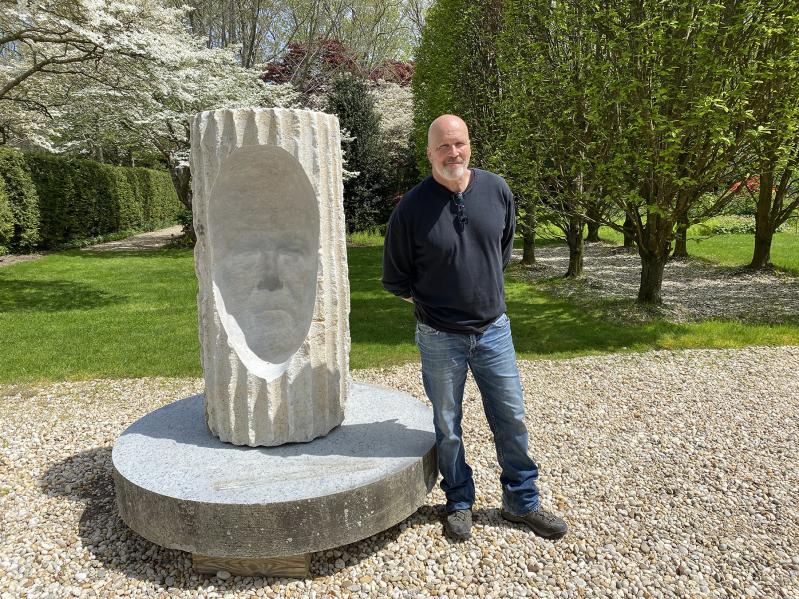"Interior Portraits," an exhibition of six large-scale stone sculptures by Mark Mennin, is on view in the sculpture court at LongHouse Reserve in East Hampton. The installation coincides with the venue's exhibition "Full Circle: Toshiko Takaezu and Friends." Mr. Mennin assisted and taught with Takaezu while at Princeton.
Five of the sculptures are concave portrait heads, carved out of onyx or marble, ranging in height from 57 to 69 inches and situated on granite bases. "I've probably carved over 100 heads in my life," Mr. Mennin told a visitor to the exhibition. For the concave, or negative, heads, he begins the work with some technology but finishes them all by hand.
While the heads are static and meditative, with strong lines and exaggerated features, Mr. Mennin discovered quite by accident that at a distance there is a binocular depth inversion, an illusion that turns a hollow or concave face into a positive one.
"Onyx is a translucent material," he said. "To project light through it I thought the different thicknesses would have different values and you would get this softened head on the other side. I said I was going to out-soften Medardo Rosso -- but it didn't happen."
He then pulled up his truck, and the lights hit the piece "in a way I saw it as a positive. This great Walt Disney moment happened." He noticed that when seen through a camera lens, the effect was enhanced, and that as one walks by the work looking through a lens, "the head turns with you because of the depth illusion. So this otherwise hugely static art historical still monolithic thing has all these kinetic undertones."
Two of the heads, "Jason 1" and "Interior Self 1" have been carved out of Tuckahoe white marble with a fascinating provenance. La Grange Terrace, also known as Colonnade Row, was built on Lafayette Street in Greenwich Village. Half the building was torn down early in the 20th century, and fragments of the colonnaded facade wound up in a landfill in New Jersey that eventually became part of the Delbarton School.
Several years after completing a commission at the school, Mr. Mennin was able to buy sections of two of the marble columns. "So in both cases," he said of the two carved heads, "these are made out of elegant refuse. If you put them next to a Greco-Roman column, they have the exact same wear-and-tear as the ancient one." The Metropolitan Museum has one of the original columns from Colonnade Row in its collection.
The heads are only a small part of Mr. Mennin's practice. In recent years, the scope of his sculpture has evolved into monumental landscape and architectural works, often involving hundreds of tons of granite and created for both private and public collections, among the latter Stanford University, the DeCordova Sculpture Park and Museum in Lincoln, Mass., and Grounds for Sculpture in Hamilton, N.J.
He first transitioned from ceramics to stone in 1984 in Italy, where he lived for three years. In addition to teaching ceramics under Takaezu at Princeton, he has taught sculpture and art history for over 20 years, first at Parsons School of Design and subsequently at the New York Academy of Art. He now lives and works in Bethlehem, Conn.
The article has been changed from its original and print versions to clarify that the column in the Metropolitan Museum's collection is not one of Mr. Mennin's but one of the original columns from Colonnade Row.




